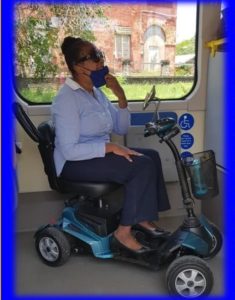
Did you know that the Developmental Disabilities Awareness Month seeks to raise awareness about the inclusion of people with developmental disabilities in all areas of community life, as well as awareness of the barriers that people with disabilities still sometimes face in connecting to the communities in which they live? As we recognize the issue of developmental disabilities awareness this month, the question of public transport becomes pertinent. We all agree that public transportation provides people with mobility and access to employment, community resources, medical care, and recreational opportunities. This is the same for all.
The Transport Board is cognizant of this and developed a paratransit service called the Call-A-Ride unit some time ago to assist with public transportation for persons who were differently able. Unfortunately over the last few years, this section of the Board’s services has encountered some challenges with resources.
Lack of reliable transportation is a major obstacle for people with disabilities, with some of them never leaving their homes simply because they lack a way to get around. Countless people with disabilities can’t reliably work, attend medical appointments or enjoy full independence. Unfortunately, lack of reliable transportation does not only keep people out of the workforce but also has far-reaching effects which can result in people being unable to contribute as taxpayers and as consumers.
We at the Transport Board realize this and have sought to address some of these challenges and with the recent purchase of the electric buses we have taken a step in the right direction. With the electric buses, we have now introduced wheelchair-accessible buses into the general route network.
These buses came with some features aimed specifically towards the differently able community and include the wheelchair ramp, an internal bus announcer system, kneeling technology, etc.
It is anticipated that these buses will assist in addressing some of the challenges identified above.
Until we are all able to live, work and move around freely we will always have a section of the community who do not get to live to their full potential. With the electric buses and the planned purchase of more, we are moving towards accessibility for all in the area of public transportation.
(From the office of the Chief Operations Officer)

